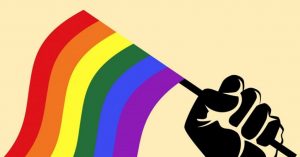Understanding LGBTQIA+ Terminologies
Sexual and Affective Orientation : A Crucial Nuance
Sexual and affective orientation refers to the attraction a person may feel towards another, whether it is sexual or emotional. This attraction can be based on biological sex, gender, or both. It is essential to understand that sexual orientation is not limited to the physical aspect. A person can be sexually attracted to both genders but only have romantic feelings for one specific gender. This distinction between sexual and affective orientation offers a more nuanced perspective of individual experiences.
Gender Identity : Beyond Assignments
Gender identity refers to the gender with which a person identifies. In most societies, gender is assigned at birth based on biological sex. However, this is not always the case for everyone. Some people may not identify with the gender assigned to them. These individuals may define themselves as transgender. It is crucial to note that gender identity goes well beyond the simple binary model. Identities like non-binary, gender fluid, and agender reflect the diversity of human experiences.
Gender Expression : An External Manifestation
Gender expression concerns how a person chooses to present themselves to the world, whether through clothing, language, or behavior. This expression may or may not match the individual’s gender identity. For example, a person identifying as a woman may adopt a masculine appearance.
Intersexuality : Breaking the Binary Model
Intersexuality refers to people born with sexual characteristics that do not match traditional definitions of male or female sex. These individuals may have chromosomal, hormonal, or anatomical variations. Intersexuality shows that the binary model of sex and gender is reductive and does not reflect the complex reality of human biology.
LGBTQIA+ : A Mosaic of Identities
The acronym LGBTQIA+ encompasses a variety of identities, including lesbian, gay, bisexual, trans*, queer, intersex, asexual, and aromantic. Each letter represents a distinct identity, highlighting the diversity of human experiences. The “+” at the end of the acronym acknowledges all other identities not explicitly mentioned.
LGBTQIA+ Rights: An Ongoing Fight
Despite progress made in many countries, the rights of LGBTQIA+ people are far from universally recognized. In some countries, homosexuality is still criminalized, and LGBTQIA+ people face daily discrimination and violence. It is essential to continue fighting for equal rights and recognition of all identities.













+ There are no comments
Add yours